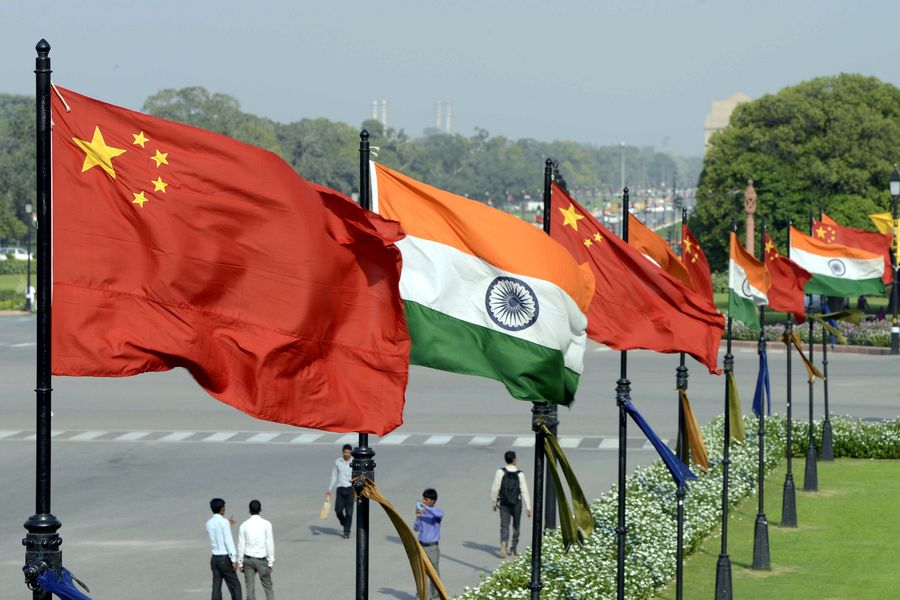
China Daily » Capital News
BEIJING, China, Apr 30 — Nandita Chaturvedi, an Indian curator, believes a recent photo exhibition in Bengaluru commemorating polymath Rabindranath Tagore’s 1924 China visit serves “to talk about Tagore’s vision for peace in Asia”.
The 10-day exhibition, titled Rabindranath Tagore: The Spirit of Asia and Our Human Future, ran from April 13 and showcased the cultural and artistic connections forged between India and China during Tagore’s visit, including photos of him with prominent Chinese scholars.
“Through organizing this event we were moved by how strong his influence still remains in China,” said Chaturvedi, co-curator of the exhibition.
Tagore is one of the most widely translated foreign authors in the country, she said.
The maiden visit of the Indian poet, philosopher and Nobel laureate to China 100 years ago has been a milestone event in the history of China-India friendly exchanges, said Ma Jia, charge d’affaires of the Chinese embassy in India.
Chaturvedi said if one looks at modern Chinese literature, many figures are influenced by Tagore.
“We feel that this history of cultural exchange that happened is very important during this time also.”
The exhibition showed pictures of Lin Huiyin, the first female architect in modern China, and romantic poet Xu Zhimo, who served as host and interpreter during Tagore’s visit. Meetings with other Chinese literary figures were arranged back then, including Lu Xun.
Sreemati Chakrabarti, chairperson of the Institute of Chinese Studies and former professor of Chinese studies at the Department of East Asian Studies, University of Delhi, welcomed the exhibition.
Chakrabarti said it was a step toward strengthening people-to-people connections and enhancing mutual understanding, which is currently inadequate.
Chinese Consul-General in Mumbai Kong Xianhua, who inaugurated the exhibition, said he was touched by the remark of Tagore, who said, “India has been one of China’s extremely close relatives, and China and India have been enjoying time-honored and affectionate brotherhood.”
Strong empathy
Tagore’s visit to China and the letters between him and Chinese scholars show a strong empathy between China and India, Kong said. “This empathy is so deeply rooted and commonly shared that it could draw all of us together again after a whole century.”
Suraj Vasisht, a visitor, said the exhibition served as a reminder of literary and artistic exchanges between India and China.
Arakali Venkatesh Prasad, secretary of the Indian Institute of World Culture, said the exhibition not only revisits a century-old legacy but also seeks to inspire contemporary solutions through Tagore’s visionary contributions to art and literature.
“Tagore significantly influenced the cultural and intellectual landscape between China and India. As the first modern Indian ambassador to China, Tagore’s contributions came against a backdrop of colonial rule experienced by both nations.”
The exhibition also showcased Tagore’s friendships with Chinese scholar Tan Yunshan and painter Xu Beihong, who visited Tagore in India in 1939 and stayed for more than a year.
Tagore hosted Xu Beihong at Santiniketan in West Bengal, a town that the latter described as a “place that corresponds to my ideal of a center of art and culture”.
Tan, who met Tagore in Singapore in 1927, also visited Santiniketan. It was there in 1937 that he founded the Cheena Bhavana, the first center of Chinese studies in India, at Visva Bharati University.
Today, on the centenary of Tagore’s visit and facing profound changes unseen in a century, China and India have the privilege of maintaining healthy economic development and social stability, Kong said.
Sino-Indian ties will not remain at a low ebb for long and people from both sides, especially the younger generation, can carry forward the great spirit of Tagore to strengthen bilateral relations, he said.
For thousands of years, China and India have engaged in continuous and reciprocal exchange of culture and commerce, he said. “We fought together and worked together.”
Kong said he believes China and India have no reason not to go side by side on the way to achieve the great rejuvenation of both nations and build a community with a shared future for mankind.
Earlier this month, a two-day international conference commemorating the centenary of Tagore’s visit to China was also held at the Cheena Bhavana in Santiniketan.
Great legacy
The flowers of China-India friendship, advocated by Tagore, are a great legacy for both people and future generations, said Ma from the Chinese embassy.
The two countries should uphold the spirit of Sino-Indian friendship and brotherhood, Ma said. China views its relations with India from a strategic and long-term perspective and has always been committed to bringing bilateral ties back on track of sound and stable development.
“China-India relations suffered some setbacks in recent years. This is not what we want to see, nor is it in the fundamental interests of our two countries and two peoples,” she said.
For more visit China Daily
For subscriptions on news from China Daily, or inquiries, please contact China Daily Africa Ltd on +254 733 566 499 or write to enquiries@chinadailyafrica.com
